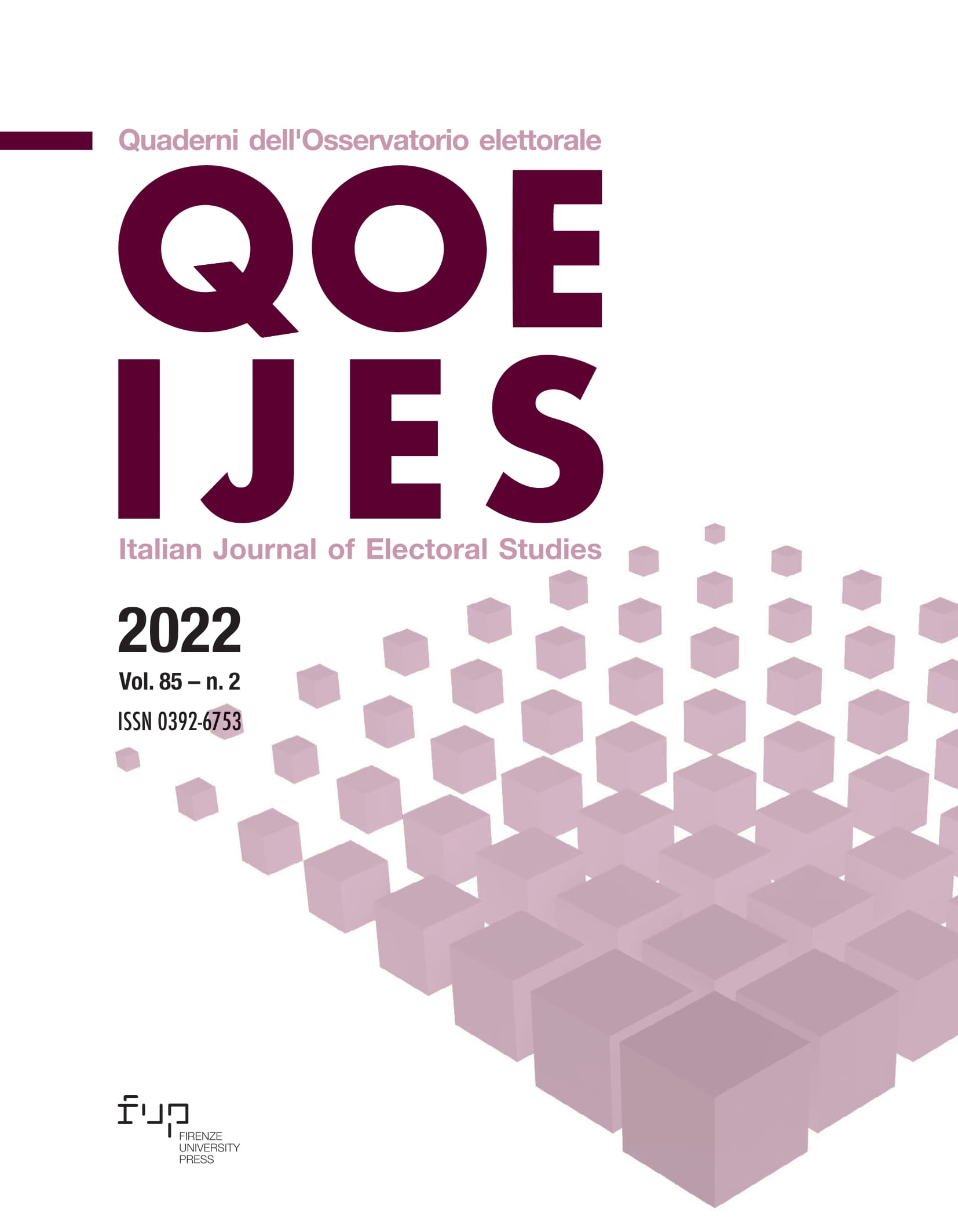Vol 85, No 2 (2022)
Issue Description
Welcome to the new QOE-IJES issue!
Get fresh research insights and innovative findings in the 2/2022 issue.
In this issue five articles explore several aspects of the electoral process.
The first one, ‘Voters, issues, and party loyalty: The 2022 Italian election under the magnifying glass’, by Marco Improta, Elisabetta Mannoni, Costanza Marcellino, and Federico Trastulli focuses on the 2022 Italian election. Analyzing vote flows between the 2018 and 2022 elections, data on the configuration of Italian voters’ preferences, and the role of sociodemographic characteristics over vote choice, the article allows a fine-grained understanding of this crucial election in Italy.
The second paper, ‘Running out of oxygen: The financial condition of Italian political parties’ by Chiara Fiorelli deals with the financial structure of contemporary political parties in Italy. The prevalent understanding in Western countries is that public funding may contribute to and preserve the system’s fairness and pluralism, defending political parties from the influence of big money. However, the Italian reform of political funding approved in 2014 appears to have moved in the opposite direction. This article describes the financial status of the major Italian political parties in 2013 and 2018, with an emphasis on the allocation of private funds.
The third article by Nicola Maggini’ New challenges for representative democracy: The changing political space in Western Europe’ explores new cleavages in party competition. While Globalisation and EU integration have reshaped political alignments in Western Europe, recent challenger parties appear to question such alleged bi-dimensionality, e.g. combining anti-immigrant stances with progressive views on moral issues. Results show that most citizens (especially young and right-wing voters) take ideologically inconsistent positions on cultural GAL-TAN and economic left-right issues, whereas are quite consistent on immigration and EU issues.
The fourth article ‘Two is better than one? Testing a deductive MARPOR-based left-right index on Western Europe (1999-2019)’, by Federico Trastulli, introduces a new left-right instrument to position parties, which relies on an explicit linkage with theoretical sources in the conceptualisation of economic and cultural left and right The old and new instruments are empirically tested on a dataset covering the 20-year period in 16 Western European countries. Results are mixed and indicate that, while more traditional patterns of competition seem to still apply across the board in pre-Great-Recession years, the new left-right index is a more valid measure of parties’ positions in the ‘turbulent times’ of the 2010s.
Finally, the last article ‘La trasparenza e l’affidabilità dei sondaggi elettorali in Italia al tempo di internet e dei social media’, by Giovanni Di Franco, argues that the Italian pre-electoral polls are facing a difficult transition compared to the previous decades. Among the various factors that in recent years make it particularly difficult to conduct polls, Di Franco analyses the spread of new survey tools based on the internet, and the increase in the number of subjects who refuse to participate in an electoral poll.
Enjoy your scientific reading!

